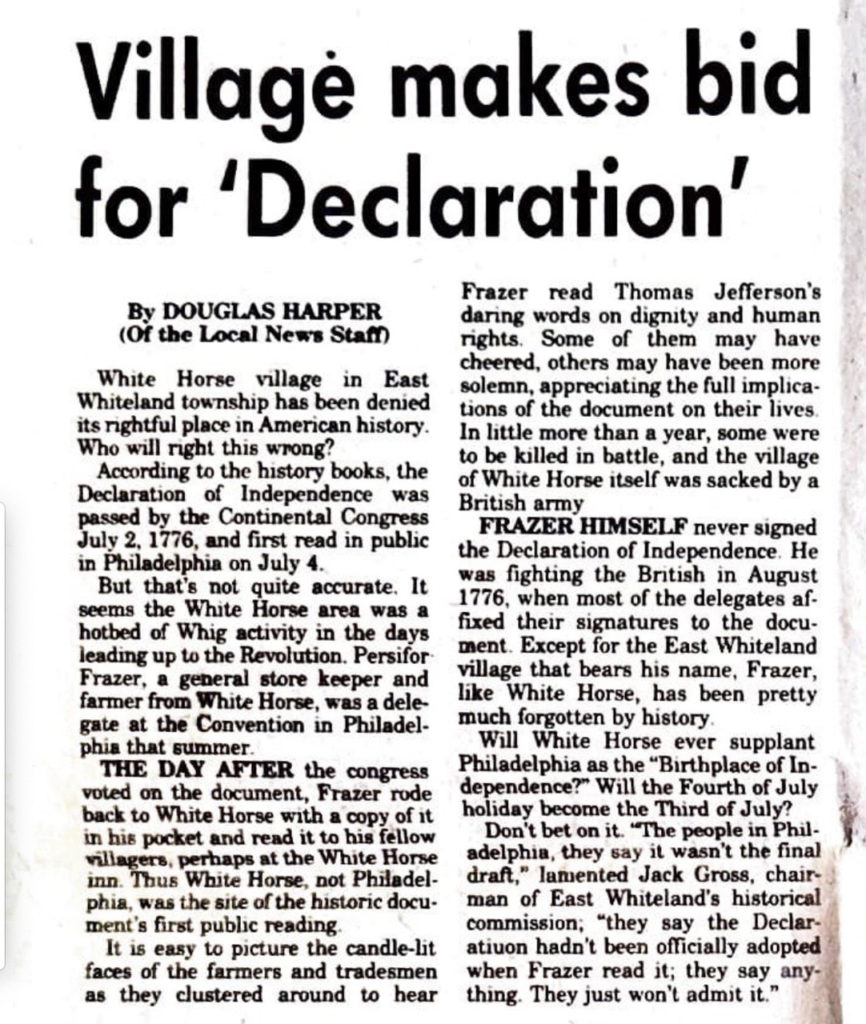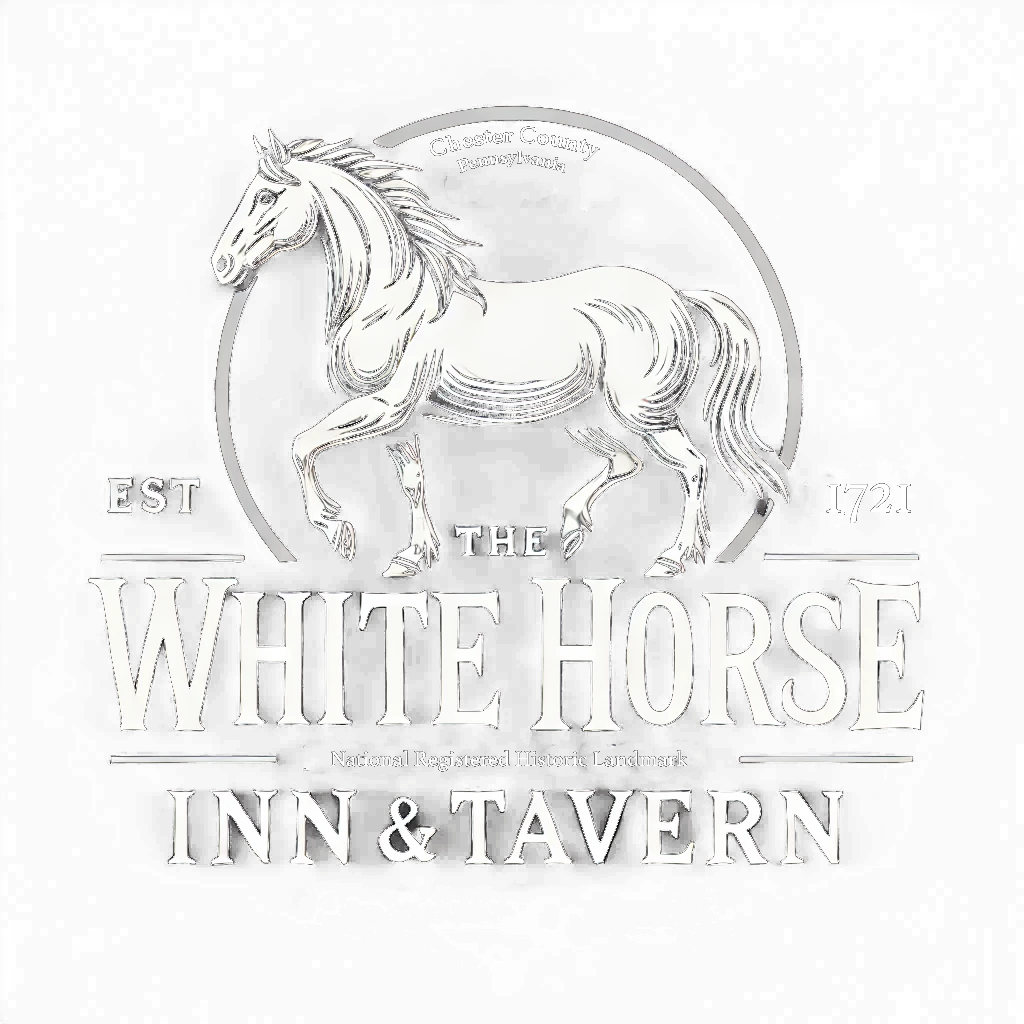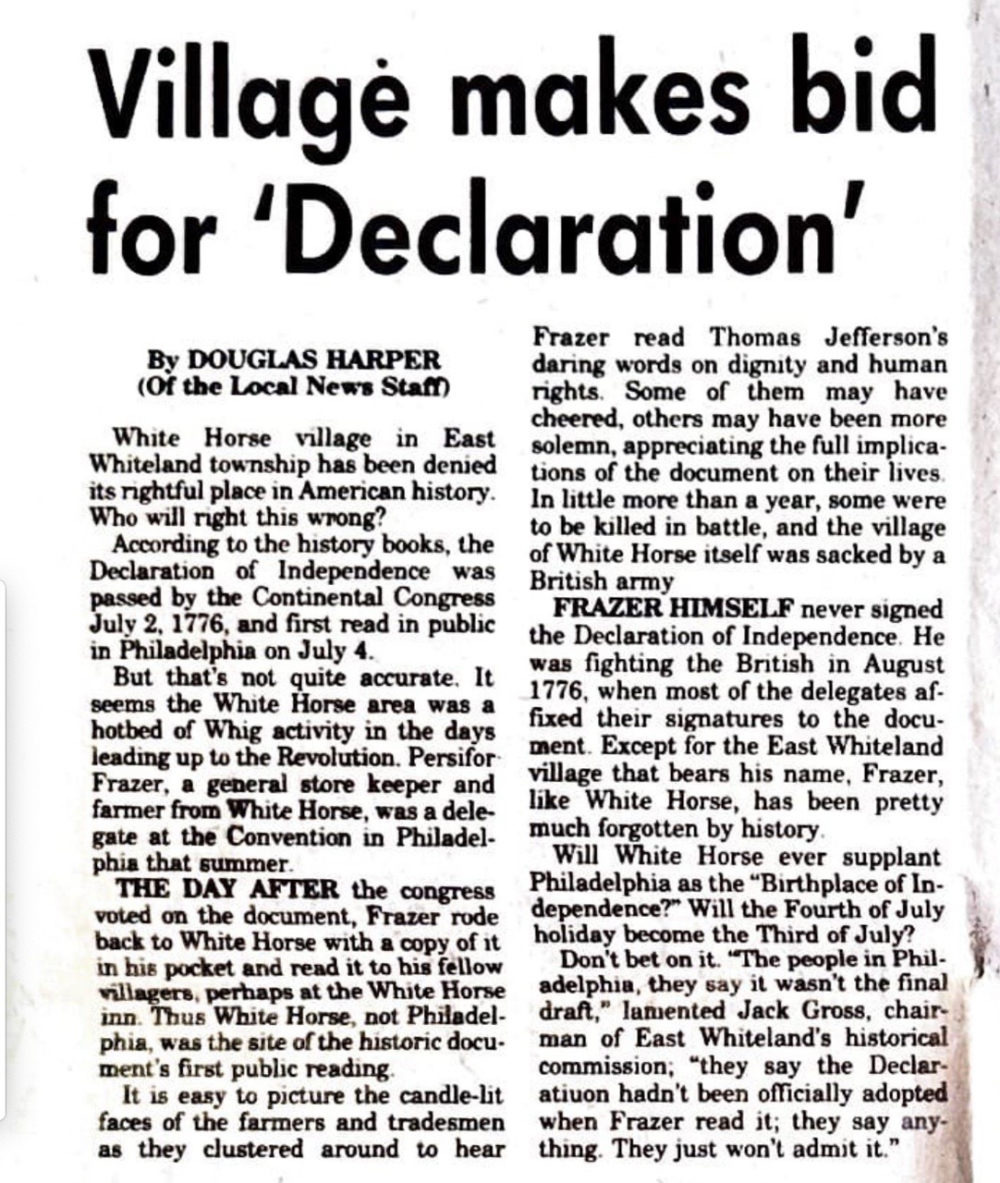While sifting through the documentation for the historical landmark designation of the White Horse Tavern, I stumbled upon this intriguing nugget. Skip Miller had hinted at this rumor, but this was the first time I found it in writing, even if it’s not a primary source:
Having been a polling place, Provincial Records indicate the Declaration of Independence was first read there in that locality.
— Letter from Doris Powell, representing the East Whiteland Historical Commission, to Mr. William Watson, Supervisor, Historic Site Survey, Pennsylvania Historical & Museum Commission, June 28th, 1976
Interestingly, John Morton, a signer of the Declaration, hailed from Chester County. Perhaps a search of local papers from July and August of 1776 might shed light on a local reading. Here’s some background on Morton and his journey to sign for our independence:
As the Chester County representative to the Pennsylvania Assembly John Morton served in a variety of position. In 1765 John Morton was one of three delegates appointed by the Pennsylvania Assembly to attend the Stamp Act Congress and it was he who brought that report back. In 1774, while serving as Speaker of the Pennsylvania Assembly, he was voted to be a delegate to the First Continental Congress held in Carpenter’s Hall in Philadelphia. On November 4, 1775 he was elected to the Second Continental Congress which was held in the State House, later renamed Independence Hall. The delegation to the Second Continental Congress, with Robert Morris and John Dickenson, absenting themselves and with Willing and Humphreys voting nay and with Franklin and James Wilson voting aye, it fell upon John Morton to cast the deciding vote for independence and he did so on July 4, 1776. He returned to the statehouse on August 2, to affix his name to the Declaration of Independence. It is said that Pennsylvania, because of John Morton’s deciding vote is nicknamed the “Keystone State”. For without Pennsylvania’s vote for independence the probability of it being adopted was doubtful. In 1776 and 1777 John Morton became Chairman of the Committee of the Whole and was heavily involved in writing the Articles of Confederation, the new nation’s first form of government. Unfortunately, he did not live to see his efforts realized.
–http://www.dsdi1776.com/signers-by-state/john-morton/
UPDATE: 2024-05-4
A member of the East Whiteland Historical Commission shared the commission’s folder on the White Horse Tavern, and inside was an intriguing article from the West Chester Daily Local News, 1987. Not only was the Declaration read, but it was the first reading of it ANYWHERE.

This was possible! Frazer lived next door to our Tavern at this time. Determined to uncover the truth, I dived headfirst into the historical rabbit hole. After several intense days and nights, I emerged into daylight, only to realize that Frazer wasn’t anywhere near Philadelphia on July 2nd, at least according to Persifor Frazer, the great-grandson of General Persifor Frazer. The following excerpt is from “General Persifor Frazer,” published in 1907:
He was chosen a member of the committee of Chester Co. to carry out the resolutions of Congress Dec. 20. 1774. In this year he was also elected a delegate to the Provincial Council better known as the Committee of Safety. He was appointed one of a committee of seven to draft a petition to the General Assembly for the manumission of slaves. — January 25, 1775. He received from Congress his commission as Captain of Co. A 4th Pennsylvania Battalion, Jan. 5. 1776. [...] From May 19 to June 29 he was serving in, or commanding detach- ments which scoured the island to arrest tories; and preparing for the expected attack by the British. With his command he started by boat for Albany Saturday June 29, and arrived there Tuesday July 2. He set out for Lake George Thursday July 4, and arrived on Sunday July 7, marching sixty of the seventy miles on foot. --Preface, "General Persifor Frazer" by Persifor Frazer, 1907.
It is unlikely that Frazer could have returned from Albany for the day, picked up a copy of the Declaration, and read it at the White Horse Inn. However, I remain undeterred and will continue digging for the truth. Perhaps a closer look at the “Provisional Records” might shed some light.

